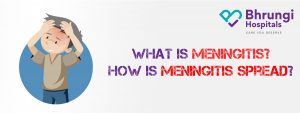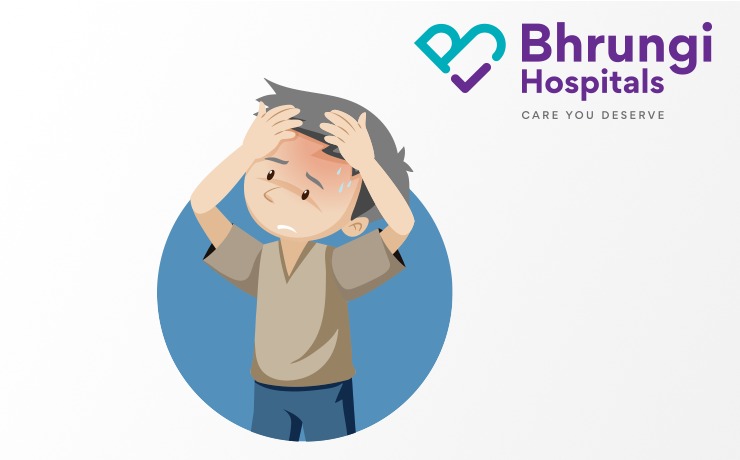
Meningitis
A case-fatality rate of 20 percent was recorded in India in 1966. There were 16, 217 cases and 300 deaths of Meningitis in India over the course of two years. Bihar has had the highest number of cases in the last two years.
What is Meningitis?
Meningitis affects the thin membranes that cover the brain and spine. Meningitis is caused by a bacterium that affects the meninges, which surround the brain and spine. The meninges work to protect the central nervous system. 20% of the people who have this disease end up with serious problems.
Meningitis can also be caused by a variety of diseases and injuries to the head and spine. Young children, older adults, and people with weakened immune systems are more likely to get the disease.
The Centers for Disease Control and Prevention says that vaccination is the most effective way to prevent the disease. Death from the disease can happen in a few hours.
Symptoms of meningitis
According to the CDC, the symptoms of Meningitis usually emerge within 7 days. Symptoms of Meningitis can develop over 2–10 days, according to the WHO. Symptoms of meningitis include:
- sudden fever
- sudden headache
- sudden stiff neck
- nausea
- vomiting
- sensitivity to light
- confusion
- drowsiness
- convulsions
- rash
- joint pain
- cold hands and feet
- coma
Effects of meningitis
Meningitis can affect the body in many different ways. There are some symptoms that may occur right away. Some people may have long-term effects after a person has recovered from the disease. Meningitis can cause the following effects.
- Severe headaches are one of the most common symptoms of Meningitis. Pain can be caused by inflammation near the brain and spine. The headaches may be mistaken for migraines.
- Sudden fever The body tries to fight a foreign invader with a sudden fever. In the early and later stages of the illness, a high temperature is common.
- Confusion and learning problems Behavioral changes can be caused by swelling and inflammation. There can be long-term problems with memory and concentration. Children can experience learning difficulties.
- Bulging soft spot There are gaps on the head where the skull’s bones have not yet fused together. The largest fontanel is on top of the head. If a baby’s fontanel appears to be bulging, this could be a sign of brain swelling or fluid build-up, which requires emergency medical attention.
- Stiff neck A child or baby with a stiff neck may be unwilling or unable to bend their head forward. An adult may notice a painful, stiff neck during the acute phase of meningitis.
- Sensitivity to light Brain swelling and headaches can result in light sensitivity and worsening headaches when looking at light. Babies or children may cry.
- Sleepiness or difficulty waking If a person can’t be woken up or sleepy, this could be an early sign of Meningitis. It can be hard for a person to stay awake due to the illness.
- Extreme fatigue As the body tries to fight the disease, a person with it may become very weak.
- Seizures or epilepsy Seizures can be caused by brain swelling or pressure caused by Meningitis. If a person has a seizure during an episode of Meningitis, it doesn’t mean that they have scurvy. Because of the pressure and inflammation that can damage the brain, sometimes people develop ecstasy after recovering from the disease.
- Trouble concentrating Children who have recovered from the disease may have trouble concentrating. Adults may not be able to focus at work or in everyday activities.
- Hearing loss, ringing in the ears, or deafness Hearing loss is a common effect after meningitis infection in children and adults. People who have recovered from Meningitis should have a hearing test. Hearing loss can range from mild to severe and can be permanent. Meningitis can cause ringing in the ears.
How is meningitis spread?
There are some types of meningitis disease that can be spread from person to person. Meningitis can be spread by any of the following: viral, bacterial, fungal, or related to another cause.
Bacterial meningitis
Different types of bacteria can cause diseases. Several of the vaccines given to infants and young children can prevent some of these types. Preteens, teens, and high-risk adults and children should get a vaccine against meningococcal meningitis, according to the Centers for Disease Control and Prevention (CDC). Not everyone who is exposed to the bacteria that cause meningitis gets sick, but they may become carriers and can spread it to others. Prompt treatment with antibiotics will often cure bacterial meningitis. Symptoms may mimic the flu, so it can be difficult to recognize in its early stages.
Viral meningitis
There are many different viruses that can cause viral meningitis. The best way to prevent viral meningitis is to practice frequent hand washing, especially before eating, after using the toilet or changing diapers, and before preparing food.
Other types
There are other types of meningitis that don’t spread from person to person. This includes fungi, diseases, injuries, and medications.
Meningitis rash glass test
Meningitis is caused by Neisseria meningitides. Meningitidis is a bacterium. Septicemia is an inflammation of the blood and can be caused by meningococcal meningitis. Meningococcemia is also known as meningococcal septicemia. About 50% of people with meningococcal meningitis will have a rash. Meningococcemia can cause a person to bleed into their skin. There is a certain type of rash that develops within a person’s skin. The rash is caused by bleeding outside the capillaries. A person can test for meningococcemia by pressing a glass tumbler against a rash. A person may have meningococcemia if the rash doesn’t disappear. However, a person should not take the glass test as a diagnosis of meningococcemia, as this form of rash can also result from other conditions. If a person has a rash that doesn’t disappear when pressed by the glass, they should contact their doctor.
When to contact a doctor
It is a serious condition that can lead to death. If a person or their child has any signs of the disease, they should seek immediate medical attention.
Treatment
According to the WHO, admission to a hospital or healthcare facility is necessary for the treatment of the disease.
Antibiotics
The antibiotics can cross the blood-brain barrier. The blood-brain barrier protects the brain from harmful organisms. Penicillin, Ampicillin, Ceftriaxone are some of the antibiotics that can help treat the disease. Corticosteroids can be used to reduce swelling in the brain. A person may need to drain their sinuses. Anticonvulsants may be given to a person who develops a seizure due to a disease.








